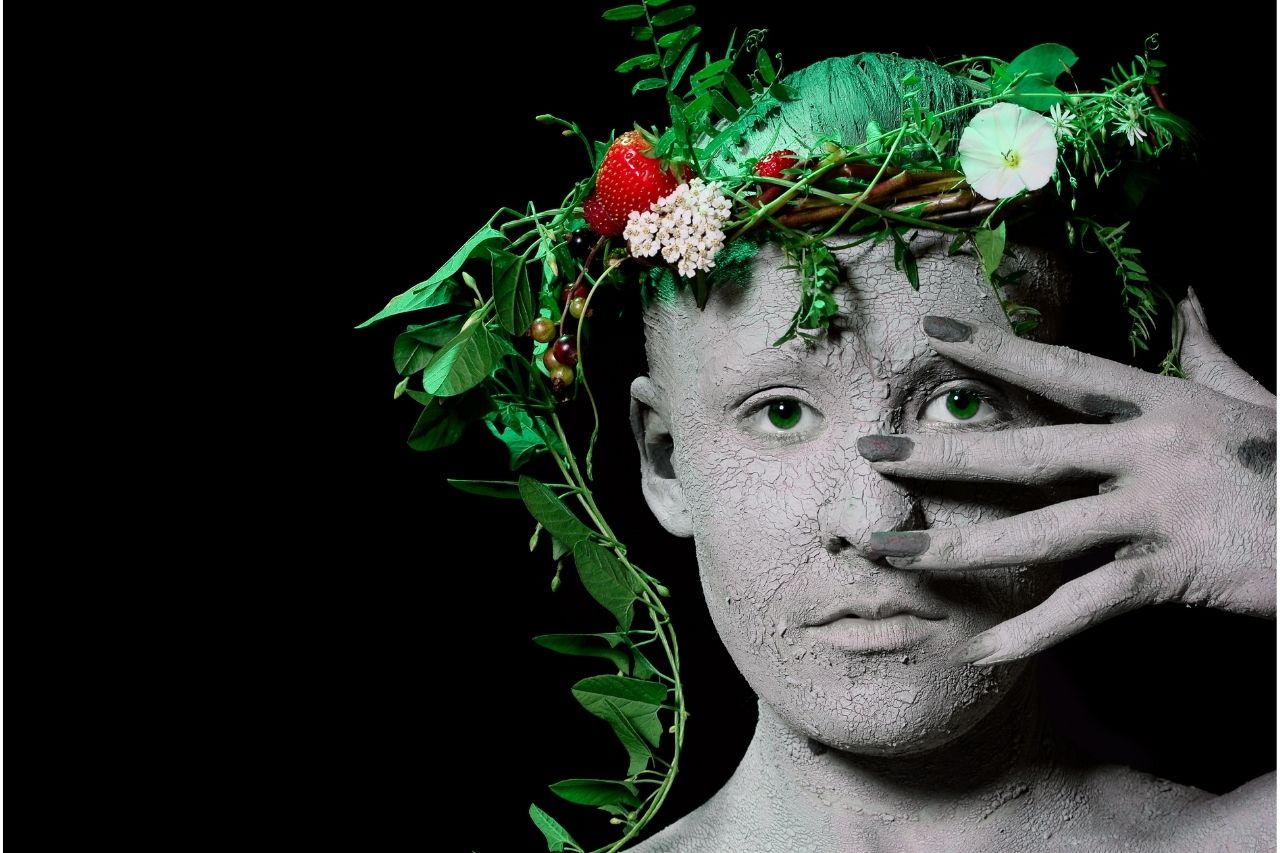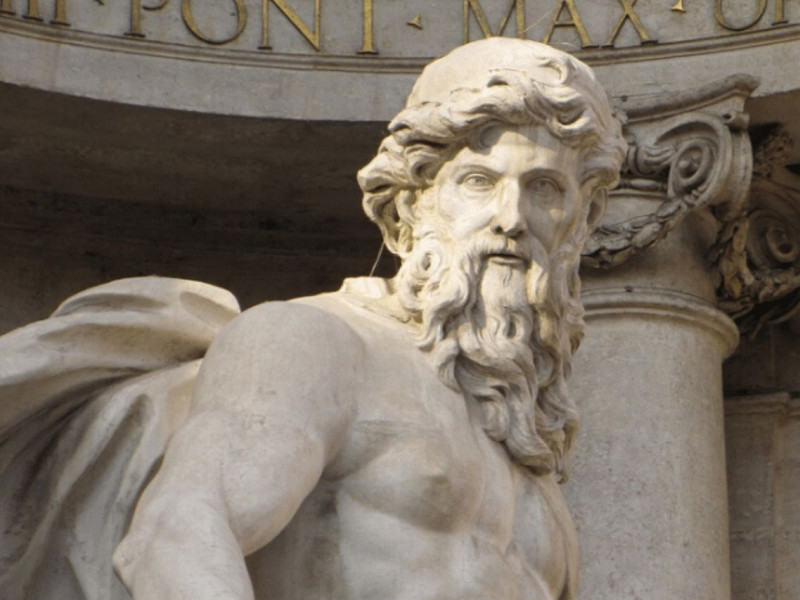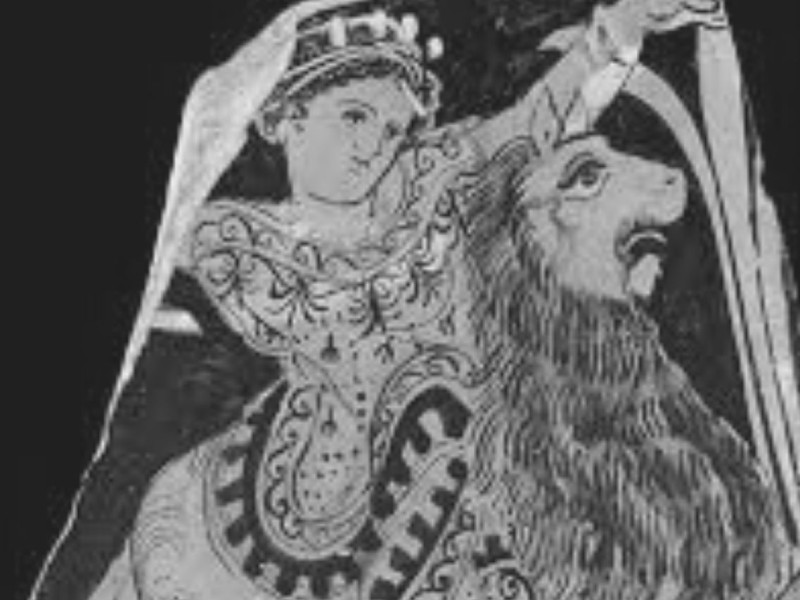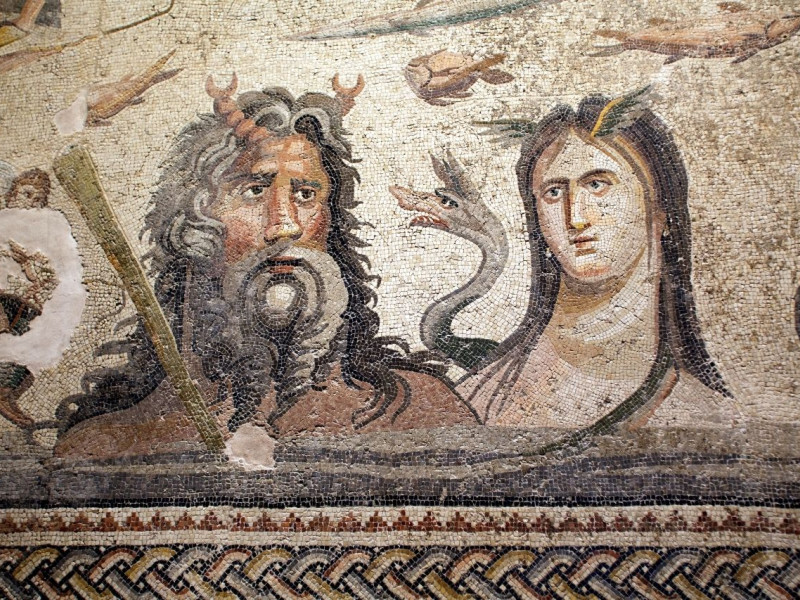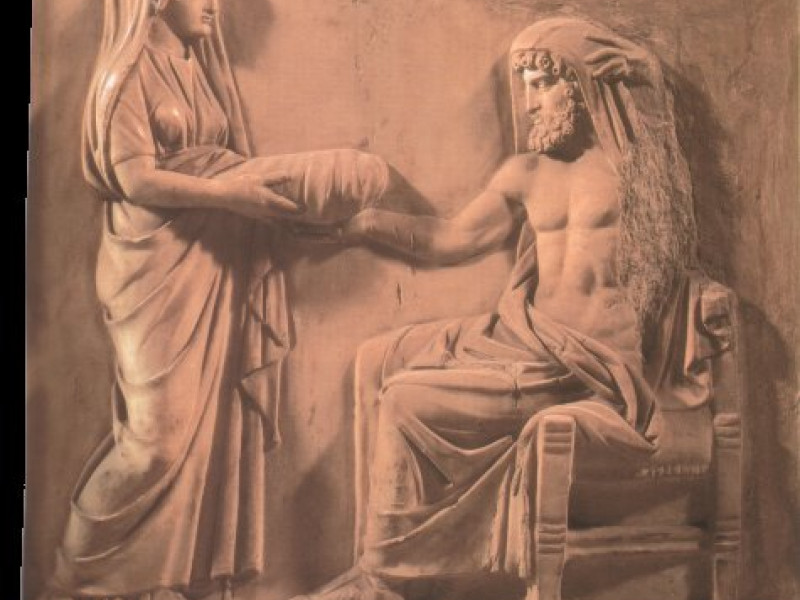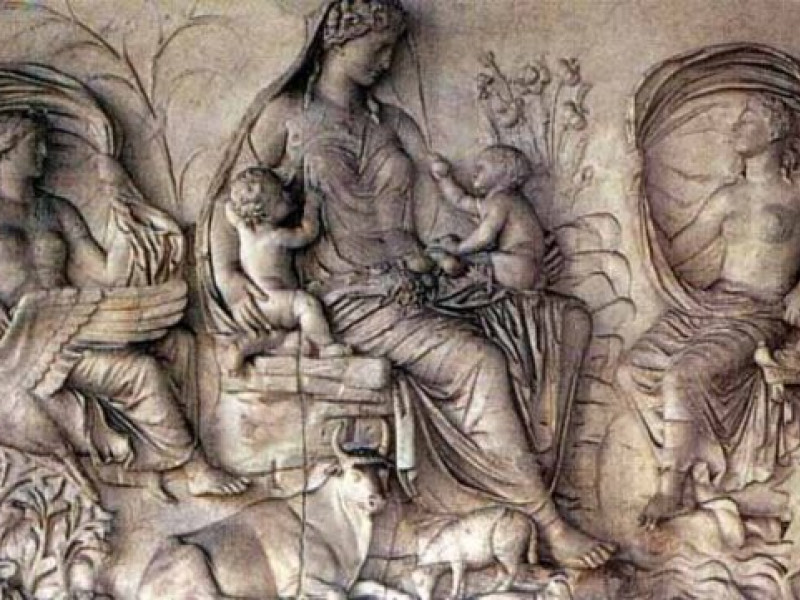Gaia
Gaia: Beautiful Mother Earth Goddess and Bearer of Greek Gods
Gaia, Titan of the first generation, was mother earth in Greek mythology. She was there at the beginning of all things. Along with her son Uranus, she was the start of all life. But read on to find out how and why she begged her children to take down their father and end his reign.
Who Was Gaia in Greek Mythology?
Gaia was the mother goddess or Greek goddess of the Earth. Like the God of Christianity, she was there at the beginning of all things and, from her, all life sprung. She was more like a force instead of an actual being. She represented the earth, and she actually was the earth as well.
It is a difficult concept to grasp, but she essentially was what she represented. After she bore the gods, she became a symbol of both fertility and agriculture, both things related to life. She joined her granddaughter Demeter in being worshipped for agriculture. Gaia bore her first child, Uranus, and together they brought about life for the rest of the deities.
She bore both gods and monsters and because of her Greek mythology could actually begin. However, not all things went as well as she’d hoped. Sometimes she had to intervene so that things could be made better. Gaia’s name is still remembered today in certain groups that worship past deities.
Family of Gaia, the Mother Goddess of All
Gaia seemed to have no lover of her own to help create Uranus, her firstborn. But she had this son and took him as her lover after he was created. Gaia and Uranus created the famed gods, but later, they each had other gods/goddesses on their own or with others. With Uranus, Gaia was the mother to:
The Titans
The Cyclopes
The Hecatoncheires, monsters with 100 hands and 50 heads each
Later in life, because of a mistake by Hephaestus, god of the forge, she bore Erichthonius
She also had a child named Typhon with Tartarus, the god and namesake of the bowels of “Hell”
In some stories, with her nephew Poseidon, Gaia had the giants Antaios and Kharybdis, among other children
The Story of Gaia, Mythology of the Mother Earth
Gaia took part in a few myths. But, as mentioned before, she was more like a presence than an actual character in the stories. She represented the earth and was the earth at the same time.
Gaia’s Random Origin and Then On to Family
The famous poet Hesiod wrote “Theogony,” in which he described many aspects of Greek mythology, including the beginning of Gaia. Gaia was the first deity to be “created” out of the nothingness and the chaos that was there at the beginning of time. Her beginning is very similar to other mythologies that have “first gods,” and they simply appeared out of nowhere and nothing. After she was created, she bore her first child who later became her lover: the Titan Uranus.
With Uranus, she created the world, and she created it to her liking. Together, they bore many children. These were the Titans, and Hesiod’s writing describes it better:
“She lay with Heaven and bore deep-swirling Oceanus, Coeus and Crius and Hyperion and Iapetus, Theia and Rhea, Themis, and Mnemosyne and gold-crowned Phoebe and lovely Tethys. After them was born Cronos the wily, youngest and most terrible of Gaia’s children, and he hated his lusty sire.”
After that, she had the Cyclopes. Their names were Brontes, meaning “thunder,” Steropes, meaning “lightning,” and Arges, meaning “bright.” The Hecatoncheires were named Cottus, Briareos, and Gyges. She had other lovers after Uranus was overthrown, and she helped set into motion a pattern of overthrows.
Gaia Takes Revenge Against a Cruel and Unloving Father
Uranus was not a good Titan. He was constantly in fear of being overthrown, and his seat in the universe being taken by one of his children. Therefore, he had no love for his children, and to keep his place protected, he threw them all into Tartarus. Tartarus was the deep abyss of the earth where souls were sent to suffer. In this sense, it was very similar to Hell.
Gaia was deeply saddened by this, and she knew she had to do something to save her children and keep them from constant abuse. So she created a sickle, and she told her children that if one of them could castrate their father, he would be overthrown, and they would be saved. Cronus, who always hated Uranus, was the one child who stepped up to the plate. Saved from Tartarus for this task, Cronus swung the sickle and cut off his father’s genitals.
He threw them into the sea, and Uranus met his end. Cronus took his place as the ruler of the universe. But even though Uranus’ time was ended, it didn’t mean that his bloodline was. From the genitals thrown into the sea, all kinds of creatures sprung up. Those creatures included the beautiful goddess of love and sex, Aphrodite.
Cronus Receives His Comeuppance, but Gaia Tries to Help
Cronus, because of what he did to his father, had the very same fears of being overthrown. He turned into just as much of a cruel and tyrannical father that his own father was. His wife and sister Rhea became pregnant, and he decided to swallow all the children so that they could never overthrow him. He did, one by one, but Rhea turned to Gaia for help.
They decided to hide the last child away on an island. When Rhea returned, she gave Cronus a rock in swaddling cloth to swallow. He did so, thinking it was a child. All the while, Zeus was growing stronger day by day being raised by Gaia on this island. He eventually returned, and with his grandmother’s advice, he overthrew his father and freed his siblings from his belly.
Zeus became the new king of the gods. He also became the ruler of Mount Olympus and fathered many other gods and goddesses. However, his victory was short-lived.
Gaia and the Titanomachy: She Wasn’t Finished Yet
Zeus became the new ruler, but after he defeated his father, he threw the rest of the Titans into Tartarus, just like his grandfather had done. Gaia didn’t like this, as she had freed them once before with the help of Cronus. So, she decided to plot against her grandson this time. Because Tartarus was the embodiment of Hell as well as a sort of deity, she laid with him and bore a son named Typhon.
This was the god who sought war against Zeus in the Titanomachy. Zeus ended up freeing the Cyclops from Tartarus at the time so that they could help him fight against this god. He won in the end, and he threw the defeated Titans into Tartarus once again.
Gaia and Her Surprise Son: Erichthonius, a Future King
Gaia, of course, didn’t have all her children with her son and lover Uranus, but this one came as a sort of surprise. It depends on the story or myth, but legend had it that the goddess of wisdom, Athena, was pursued by her brother Hephaestus.
He was the god who had helped her to emerge from her father’s forehead by splitting Zeus’ head with an ax. Because of that, he might have asked to marry her or assumed that he was owed a sexual encounter.
Either way, he tried to press himself upon Athena. But Athena fought back. Just as he was about to ejaculate, Athena pushed him away, and Hephaestus sent his seed into the ground. Since Gaia was the earth, she was impregnated by this, and she bore a son named Erichthonius.
Athena was forever a virgin goddess, but Gaia gave Erichthonius to her to raise as her adopted son. And Erichthonius would later become an early king of Athens.
Gaia, the Mother Goddess, as Represented in Artwork
Gaia was most often represented in this role, as the mother of Erichthonius, giving her son to Athena. She was also often shown as a matronly woman, portraying her mother goddess aspect, or she was seen lying upon the earth.
How Was Gaia Worshipped?
Gaia’s cult mainly worshipped her under the name of “Anesidora” which meant “giver of gifts.” She and Demeter were worshipped together as goddesses of fertility and agriculture. Because she was a goddess of the earth, it was important that black animals were sacrificed to her.
Gaia in Pop Culture
Gaia still has a legacy today and appears in some pop culture:
In Wicca, she is still worshipped as a mother goddess.
The naturalist and author James Lovelock has written a lot about this goddess in many of his books. Many believe that Lovelock used Gaia in a perfect combination of both science and the spiritual world.
She also appears in the book series, “Percy Jackson & the Olympians.”
There are also a few skincare and other cosmetics companies with the name “Gaia” in them.
Conclusion
Take a look at the main points about Gaia covered in the article above:
Gaia was the Greek version of a mother goddess or Mother Earth. She was the deity that was there at the beginning of all things. She was born out of the nothingness and chaos that was there before all life.
Gaia was the representation of the earth, but she also was the earth. She later became a goddess of fertility and agriculture as well. She was very similar to her granddaughter, Demeter.
Gaia’s first child was Uranus and, with her son, she bore many children. Together they made the world as they wished, and they were the start of all life. She and Uranus had the Titans, the Cyclopes, and the Hecatoncheires, monsters with a hundred hands and fifty heads each
She also had a son Erichthonius and Typhon with other lovers.
Uranus turned out to be a cruel and unloving father. Because he was constantly afraid of being overthrown, he sent all his children to Tartarus, the Greek version of Hell. Gaia was furious, and she decided it was time that one of her children overthrew their father. She made a sickle and offered it to them, and Cronus took her up on it. He cut off his father’s genitals and threw them into the sea.
Because of that, many creatures sprung into life. Even Aphrodite, the goddess of love and beauty, was born from Uranus’ genitals and seafoam
Cronus became the ruler of the universe but, with Gaia’s help later on, he would meet the same fate as his own father. When Cronus had children, he swallowed them to keep them from overthrowing him. But his wife and mother protected his final son, Zeus, and took him to an island. When Zeus was ready, he came back and overthrew his father.
Zeus threw all the Titans into Tartarus, and Gaia took her revenge. She bore a son with Tartarus, Typhon, who challenged Zeus. Zeus brought out the Cyclops from Tartarus to fight against the Titans. But when he won, he sent them all to Tartarus again.
Gaia had another child, but it was sort of a surprise one. When Athena, the goddess of wisdom was born, she had a little help from her brother Hephaestus to help her emerge from her father’s head. Hephaestus pursued her, and when he tried to have sex with her, Athena pushed him away. He ejaculated into the ground. Gaia was impregnated, and when she had her son Erichthonius, she gave him to Athena to raise as her adoptive son. Erichthonius became a later king of Athens.
In art, she’s seen as a matronly woman, and she’s often in the scene of handing Erichthonius off to Athena.
In pop culture, she can be seen in “Percy Jackson & the Olympians” and many of James Lovelock’s books.
She is also still worshipped in Wicca circles as a mother goddess.
How can we forget the Titan goddess who started it all? Gaia’s legacy lives on because she was the spark of life that set everything into being. It’s too bad that she wasn’t always happy with the way things turned out, but that’s no surprise. Her descendants made a mess of things, and even though they were deities, they were also so very human.
